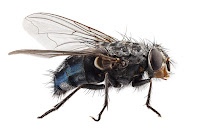Fun for this year

There are lot of strange fiestas in Spain. Every now and then I'll see some article or read a report about this or that event where everyone throws paint at a man dressed as a clown/harlequin for either attempting to steal/failing to steal a religious icon in Guadix and Baeza (Cascamorras), where a man, also dressed as a clown/harlequin, jumps over babies each Corpus Christi in Castrillo de Murcia, in Burgos (El Colacho), where devils capture saints with the intention of burning then to death if they are not sidetracked into climbing onto the balconies of fair maidens with rape in their minds (La Santantonà in Forcall), where six open coffins, with live occupants, are paraded around a church and its cemetery to musical accompaniment in Las Nieves, Galicia (Fiesta de Santa Marta de Ribarteme) or where giant puppets, skeletons and knights Templar parade through the torchlit streets of Soria (Las Ánimas). Once upon a time any list of odd festivals would include the takeover of the tow...












